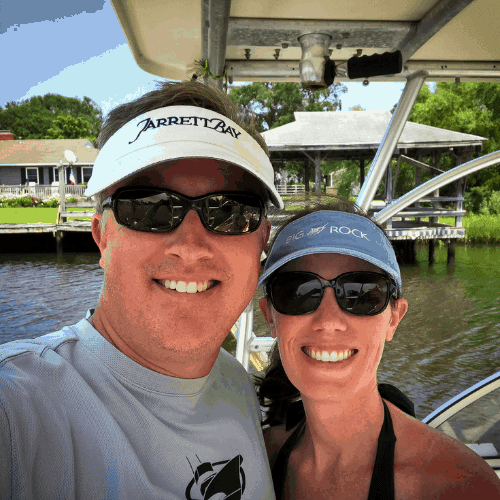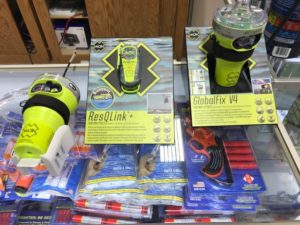Boating Safety: EPIRB or PLB
A common question in boating safety circles is whether to get a PLB or an EPIRB. The answer is an unequivocal yes. Get one or the other. In a not too technical way, we’ll explore the similarities and differences and let you decide for yourself which one will best suit your needs. You may decide you want both.

An EPIRB is an Emergency Indicating Radio Beacon. A PLB is a Personal Locator Beacon. They both do the same thing in that they send a signal to satellites which in turn send the information to Rescue Coordination Centers (RCC).
The RCC will determine a location. Land based signals are handled by the Air Force and maritime signals are handled by the Coast Guard. Both the EPIRB and the PLB also transmit a secondary signal on a different frequency. This signal allows searchers to home in on it.
PLBs are registered to a person and are generally carried on a person. They are designed to transmit for a minimum of 24 hours with a maximum battery shelf life of 6 years. Some float and some don’t. Some have an internal GPS to provide a more precise position, some don’t.
PLB Functionality
PLBs must be turned on manually by the user, and to transmit a reliable signal must be held with the antenna in an upright position. Since a PLB is designed to be carried on a person, they are appreciably smaller in size.
EPIRB Registration
EPIRBS are registered to the boat. They are designed to transmit for a minimum of 48 hours and most newer models have 10 year shelf life batteries. Almost all new EPIRBS have an internal GPS. All EPIRBS float and are designed so that they transmit reliably as they float.
EPIRBS may be automatically or manually activated and some are designed to automatically deploy when the release mechanism in their case gets wet. They are quite a bit larger than a PLB.
How Much Does A PLB or EPIRB Cost?
Boats and boating are expensive. With PLBs starting at about $250 and EPIRBS starting at about $400, they are a drop in the bucket of or overall boating expenses.
It is estimated that EPIRBS and PLBs have saved over 40,000 lives since they were invented. You are worth it. Get one or both now.
Once you buy the one you decide will serve you best, be sure to register it at https://www.beaconregistration.noaa.gov Registration is fast, free and easy. Save your registration user name and password so that you can update the information if anything changes.
** The above safety information was generously provided by Paul Barnard, Recreational Boating Safety Program Manager, U.S. Coast Guard Eighth District — The U.S. Coast Guard DOES NOT offer any specific brand recommendations. They are only providing safety recommendations.

My Personal EPIRB Recommendation
As the editor and publisher of Best Boat Report, I want to share with you the EPIRB I personally use on my boat.
While I have not had to use it in an emergency setting, it is great comfort having the peace of mind that if something bad does happen on the water, I have an EPIRB and ditch bag ready to go.
EPIRB

My Recommendation: EPIRB by ARC on Amazon
An Emergency Position Indicating Radio Beacon or EPIRB is used to alert search and rescue services in the event of an emergency. It works by transmitting a coded message via satellite and earth stations to the nearest emergency rescue center.
Some EPIRBs also have built-in GPS which allows the Coast Guard or other rescue services to accurately locate you to +/- 50 meters.
This is another reason I like the brightly colored ditch bag because it allows a Coast Guard helicopter or airplane to see your location easier of your boat is no longer visible above the water.
EPIRBs like the one I purchased also have a long-lasting strobe light to aid rescuers in locating you in case of a night search and rescue effort.
THis is the EPIRB unit that I own. Amazon Link
